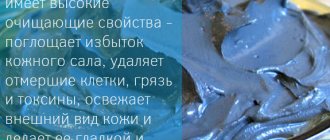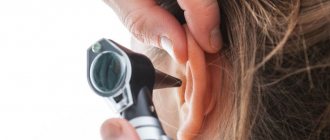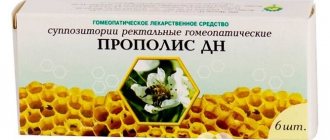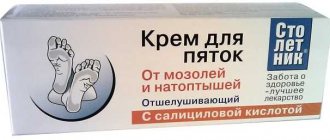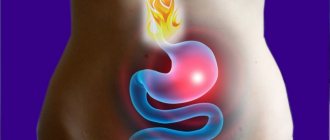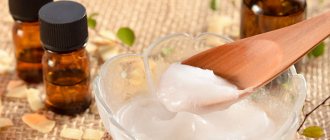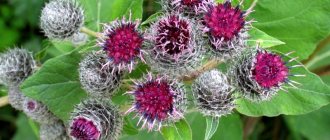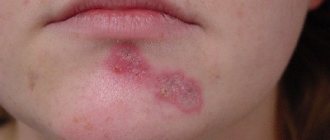Category: Traditional medicine, Succulents Published 09/29/2018 · Comments: · Reading time: 10 min · Views: 18,596
Even ancient healers knew about the healing properties of this succulent. They actively used it for a variety of purposes, as they indicated in their medical treatises. Surprisingly, the first mention of aloe as a medicinal plant dates back to 2000 BC. e.
And today the succulent is successfully used in the pharmaceutical industry; aloe extract is included in drugs and biological additives. And in addition, you can prepare medicines from juice and gel at home: aloe ointment, infusions, drops, solutions, balms from juice, single-component and multi-component - there are many recipes for various ailments that are not inferior in effectiveness to pharmacy ones. No wonder this succulent received the nickname “windowsill doctor.”
Morphological description
The appearance of aloe is very diverse, from miniature ornamental plants to trees 8-10 meters high. All its species are characterized by sword-shaped leaves extending from the base-stem, along the edge of which there are rather sharp thorns. The color of the leaves ranges from pale light green to rich green. The roots are fibrous, located near the surface.
From the stem, once every 2-3 years, from January to April, a long peduncle with flowers from red to white, which are collected in a multi-flowered dense raceme, grows. The aloe flower has a strong smell that can cause headaches. The fruit is a cylindrical capsule.
Under artificial conditions, it reproduces with the help of pups or shoots, which quickly produce roots in water. In the natural environment it reproduces by both seeds and children. It is a light- and moisture-loving plant, not resistant to cold.
What else is useful for aloe?
The juice and pulp of the leaves make the plant a powerful natural antiseptic.
Therefore, the use of the flower in the treatment of purulent wounds, burns and trophic ulcers really makes sense. It helps to stop inflammatory processes and accelerate tissue regeneration. Preparations made from aloe have a pronounced analgesic and immunostimulating effect - they naturally strengthen the body's protective properties.
Aloe also helps lower cholesterol levels by destroying plaque in blood vessels. A separate topic is the use of aloe in the beauty industry. Even at home, you can organize procedures that will not be inferior to expensive sessions. Aloe juice has a beneficial effect on the skin and hair. In short, there are a lot of reasons to place such a useful “guest” on the windowsill.
We also recommend that you read: Everything about Aloe with honey: what it treats and how to use it in folk medicine." Aloe (Áloë - in Latin) is a genus of succulent plants of the Asphodelaceae family - one of the most famous indoor plants, actively used in home cosmetology and herbal medicine. From this article you will learn how to properly prepare a mixture of aloe and honey, what this composition cures and how it should be used for various purposes.
Features of the plant leaf
Aloe leaves have an unusual structure and include a gelatinous, gel-like core surrounded by a layer of sap and a thin, tough skin. Leaves can accumulate large amounts of water, increasing significantly in size. To preserve moisture, the leaves close their pores, which prevents the evaporation of water when there is insufficient supply from the outside. During prolonged drought, the size of the leaves visually decreases due to the consumption of moisture reserves. Also, in unfavorable conditions, the plant sheds its lower leaves in order to preserve life.
Features of storage of the product
Since the prepared formulations contain exclusively natural ingredients and do not contain preservatives, they have a limited shelf life. Agave juice in its pure form when in contact with air is stored for no more than 4 hours, then it begins to lose its healing properties and becomes useless. When preparing medicine from aloe juice, you need to know how to store it correctly.
The juice can be stored for 3 days in a tightly closed and sterilized container in a cool, dark place, but avoid letting air into the container. To increase shelf life, you can mix the juice with a component containing alcohol in a 1 to 1 ratio. This does not have to be vodka or pure alcohol; strong red wine, such as Cahors, is often used.
Leaves wrapped in film can be stored in the refrigerator for 1 month, which is useful when a small piece is needed for treating wounds or performing cosmetic procedures.
Difference between Aloe Vera and Agave
In addition to external morphological characteristics, plants differ in composition. Thus, aloe vera is characterized by more fleshy leaves, therefore, containing a larger amount of gel.
Which aloe is healthier: According to research conducted in 2011 at the Venice Scientific Institute in Italy, it was found that homemade aloe is 200% richer in nutrients.
In our conditions, it is easier to use agave - an affordable and unpretentious crop for home cultivation. But you can also use a more exotic type - aloe vera, the medicinal properties of which and recipes are similar to the use of agave.
Use during pregnancy and during breastfeeding
The use of any preparations containing aloe juice or pulp by pregnant women is only possible externally. The remedy is especially effective for a runny nose. The juice is diluted with water in equal proportions. The medicine begins to work immediately: inflammation of the mucous membrane disappears, and it has a detrimental effect on microbes. When adding carrot juice (1:2), the mixture helps in the treatment of sinusitis.
For a pregnant woman, it is recommended to use aloe juice with vegetable oil for hemorrhoids. A decoction compress is useful: pour 5 large leaves into 0.5 liters of water and leave in a water bath. Moisten gauze in the cooled broth and make a compress.
Despite the numerous medicinal properties, pregnant and nursing mothers should be wary of any preparations containing aloe. You can use different mixtures containing agave, but only for external care. To relieve inflammation of the throat, rinses and lotions are suitable.
Article design: Oleg Lozinsky
Collection and preparation of aloe
The plant accumulates the maximum useful substances by the age of five. The lower and middle leaves are subject to harvesting, which are collected together with the stem-enclosing sheaths. They are removed very carefully, excluding breakage or tearing of the sheet, at any time of the year (for home cultivation).
Fresh leaves are suitable for juice and other dosage forms - they should be stored in the refrigerator for 10-12 days before preparing to maximize their beneficial properties. At T 00C, the raw materials are stored for about a month: for this, the leaves are washed, dried and wrapped loosely in foil.
Dry the raw materials in the shade, in a ventilated area, whole or cut into pieces. After drying, the leaves acquire a wrinkled appearance, honeycombed at the fracture and are very fragile. Store in paper or fabric bags for 2 years.
The question often arises: why keep the removed leaf, why can’t it be used fresh? Aging allows you to obtain biostimulated products from the leaf: in the cold, vital processes slow down, and unique biostimulants begin to be produced to maintain cell viability.
Preparation of raw materials
Almost all parts of the succulent are used in pharmaceuticals: roots, juice and pulp of leaves, they are used both in pure form and prepared as sabur or added to other components. At the pharmacy you can purchase ampoules containing liquid extract of the plant.
As a rule, at home, juice and gel mass are extracted from it, which are used as an independent medicine or various preparations are prepared on their basis.
There are a number of nuances that you should be aware of so that the resulting raw materials have a therapeutic effect:
- you need to take a succulent 3–7 years old; its leaves contain a high concentration of useful substances, while in a young plant they are not enough, and in an older plant they steadily decrease;
- Before collecting the juice, it is recommended not to water the flower for several weeks; this will allow useful elements to accumulate in its parts;
- It is better to extract juice and gel from the lower, fleshy leaves, at least 15 cm long, which must be cut with a sharp knife; you can take the whole leaf or part of it;
- they must be used immediately, since after 4 hours all the healing properties of aloe are lost;
- scientists have proven that once in a cold and dark place, a succulent begins to produce natural biostimulants, so it is recommended to wrap the cut leaves in dark paper or foil and put them in the refrigerator for a week and a half; but it is important to take into account the specifics of the recipe; in some cases fresh leaves are required.
You can use different methods to prepare aloe juice. For example, pass parts of the succulent through a meat grinder or chop with a blender, and squeeze the resulting pulp through several layers of gauze. Aloe leaves can be cut lengthwise and the gel-like pulp can be scooped out with a teaspoon. Store the resulting medicine in the refrigerator, placing it in a glass container and sealing it tightly.
Preparation of sabur involves evaporation of the plant juice, resulting in a highly concentrated medicinal composition. It is taken in small doses, most often diluted with water beforehand.
Chemical composition
The leaves contain many useful components (about 200), which determine the value of the crop:
- water (up to 97% of the mass);
- esters;
- traces of essential oils;
- acids: citric, cinnamic, malic, succinic, chrysophanic, l-coumaric, hyaluronic, isocitric, salicylic, etc.;
- tannins;
- resins;
- flavonoids, incl. catechins;
- beta-carotene;
- enzymes;
- bitterness;
- minerals: phosphorus, potassium, sodium, chlorine, calcium, iron, magnesium, manganese, chromium, zinc, cobalt, etc.;
- amino acids: threonine, methionine, leucine, lysine, valine, isoleucine, phenylalanine;
- simple sugars: fructose, glucose;
- polysaccharides, incl. acemannan;
- vitamins: B1, B2, B3, B6, B9, B12, C, E, retinol, choline;
- steroid molecules: sitosterol, composterol and luteol;
- anthraglycosides: nataloin, emodin, aloin, homonataloin, rabarberone;
- substances of the phenolic group, incl. anthraquinone.
Methods and purposes of using a healing flower
There are many ways to use aloe in medicine:
- ointments;
- solutions;
- drops;
- creams;
- lotions;
- masks;
- pills;
- injections.
The purpose of using each product has one goal - healing the body and getting rid of diseases.
What can be treated with agave?
Aloe arborescens or agave is a universal remedy for the treatment of many diseases. It will be useful at any time of the year, as it has a complex of healing substances.
Used for the following purposes:
- to improve immunity;
- during the treatment of conjunctivitis and other ophthalmological diseases;
- for prolonged stress as a sedative;
- to improve the functioning of the digestive system;
- during the treatment of colds of the nasopharynx, chronic ENT diseases and cough;
- to reduce blood sugar levels;
- for the treatment of gynecological diseases;
- when treating wounds, ulcers, abscesses and burns.
Medicines
In modern medicine, aloe is used to treat many diseases. Medicines available in medicine are very widely available.
Medicines are available in the following forms:
- juice in its pure form - internally and externally in the form of compresses;
- extract - orally and for injection;
- liniment - externally;
- syrup - for intoxication;
- tablets made from chopped succulent leaves - rarely used, usually to eliminate ophthalmological diseases.
What helps in cosmetology?
Aloe leaf juice helps get rid of many skin problems. It is used in the following cases:
- as a remedy for acne and blackheads - easy-to-prepare masks made from St. John's wort, lemon or oatmeal will help you forget about these unpleasant shortcomings;
- to improve the general condition of hair, eliminate dry skin, smooth out wrinkles;
- to reduce redness due to adverse environmental effects - sun, wind, frost.
Benefits for face and hair
Aloe has many benefits for facial skin:
- moisturizes and saturates with nutrients;
- regenerates damaged cells;
- slows down skin aging as it accelerates collagen synthesis;
- has antioxidant and anti-inflammatory effects;
- saturates the skin with oxygen.
Aloe is used in creams, lotions, masks and serums, and also as an effective remedy after sun exposure - it soothes and moisturizes the skin.
The plant can be called hypoallergenic, since it is similar in composition to human skin. Suitable for all skin types. The use of aloe for hair is also universal:
- saturates hair with vitamins;
- strengthens roots;
- activates hair growth;
- reduces hair loss;
- fights dandruff.
The plant is added to shampoos and hair care masks.
Medicinal properties of aloe
Each therapeutic effect of a plant is determined by a group of beneficial substances contained in aloe.
- Antibacterial, incl. against staphylococci, streptococci, typhoid, intestinal, diphtheria and dysentery bacilli, antiviral and antifungal - due to acemannan, aleolitic, phenylacrylic, chrysophanic and cinnamic acids, vitamin C;
- Anti-inflammatory and antiseptic – salicylic acid, bradykininase enzyme, steroid molecules;
- Antitoxic – acemannan, aloin (a substance from anthraquinone derivatives), phenolic components, catalase enzyme;
- Antioxidant - manganese, copper, vitamins C and E, anthraquinone and phenol molecules;
- Choleretic – zinc, selenium and inositol components;
- Calming – magnesium, manganese, B vitamins;
- Laxative – anthraquinone and phenolic group substances;
- Pain reliever – salicylic acid, bradykininase enzyme;
- Antihyperglycemic - two fractions of acemannan - Erboran A and B;
- Antiallergenic – bradykininase enzyme;
- Anticancer – aloemodin, which is an anthraquinone molecule, acemannan, antioxidant vitamins and minerals;
- Wound healing, incl. in relation to sluggish, long-term processes - vitamin C, the enzyme bradykininase;
- Regenerating – vitamin C, catalase enzyme, anthraquinone;
- Immunomodulatory - due to polysaccharides, magnesium, and the enzyme bradykininase.
The plant enhances the secretory activity of the digestive glands (chrysic acid, sodium), normalizes metabolic processes, has a tonic, nourishing, rejuvenating and moisturizing effect on the skin by activating the growth of fibroblasts, relieves itching and irritation. Promotes regeneration of skin damage without scarring. Reduces blood cholesterol levels and promotes the breakdown of cholesterol plaques. Eliminates inflammation in the biliary tract, normalizes the function of the gallbladder.
About the benefits of aloe
There are many types of this succulent, but, as a rule, in almost every home there are two representatives - aloe vera, also known as Barbados or real, and agave tree aloe. Both plants are used for medicinal purposes and cosmetology; aloe vera contains a healing gel, while agave leaves are filled with valuable juice. These formulations are rich in the following beneficial substances:
- amino acids - they actively participate in regeneration processes;
- B vitamins - necessary components for full cellular metabolism;
- tannins - these water-soluble organic compounds have a pronounced anti-inflammatory, bactericidal effect, thanks to which wounds on the skin heal quickly and without complications;
- carotenoids - natural pigments necessary for the body to obtain vitamin A; it is useful for the organs of vision and skin;
- catechin is an important flavonoid with an antihistamine effect;
- mineral salts - maintain the acid-base balance in the body, normalize water-salt metabolism;
- enzymes: amylase and lipase help digestive processes, breaking down fats and sugars, and also fight inflammation;
- flavonoids are substances that have a complex effect: disinfectant, anti-inflammatory, immunomodulatory, decongestant, antihistamine, etc.
Thanks to such a rich composition, the beneficial properties of aloe vera and agave are not inferior in effectiveness to medical drugs. But it is important to know how to properly extract raw materials so that they do not lose their healing properties.
The use of various dosage forms of aloe
Fresh Juice
- Chronic gastritis with low acidity, tendency to constipation, colitis, biliary tract diseases, stimulation of digestion and appetite. It is also prescribed for prolonged cough. Take three times a day. 1 tsp each before meals.
- Tuberculosis. Take three times a day. 1 tsp each before meals.
- A wide range of diseases of the skin and mucous membranes: wounds, burns, cracks, lupus, trophic ulcers, radiation damage to the skin, eczema, epithelioma, herpetic rashes, psoriasis. Also helps with acne. Apply juice to pathological elements 5-6 times a day.
- Used for joints in inflammatory diseases for rubbing.
- Inflammation of the nasopharynx and gums, ulcerative stomatitis. Lubricating damage with juice, irrigation or turunda with juice.
- Cervical erosion, vaginal candidiasis. Tampons soaked with juice are inserted into the vagina overnight for 2 weeks.
- Acute rhinitis. 2-5 drops in each nostril 4-5 times a day.
- Improves the body's defenses against infectious agents - 1 tsp. morning and evening, before meals.
Sabur – evaporated juice
- Constipation is atonic and chronic.
- Stimulates digestion.
- Choleretic effect.
Take diluted, 0.03–0.1 g per dose once a day.
Syrup
- Gastrointestinal diseases of acute and chronic course.
- Posthemorrhagic and hypochromic anemia (in combination with iron).
- Helps with intoxication, after long-term illnesses to restore the body. Recommended for asthenic conditions.
Prescribe 1 tsp. twice or thrice a day, half an hour after meals.
Aloe extract liquid in ampoules
- Eye diseases: blepharitis, conjunctivitis, iritis, progressive myopia, etc.
- Chronic gastritis, enterocolitis, peptic ulcer and duodenum.
- Bronchial asthma.
- Inflammatory gynecological diseases.
- General diseases with a long, chronic course (chronic arthritis, scleroderma, epilepsy, etc.).
Intended for subcutaneous administration in a course of 25-50 injections of 1 ml (adults) and 0.5 ml (children over 5 years old) once a day. If necessary, injections are prescribed in a repeated course.
Aloe extract according to Fedorov, eye drops, dietary supplement
- Farsightedness and myopia;
- Dry eye syndrome;
- "Night blindness";
- Myopic chorioretinitis;
- Diabetic retinopathy;
- Blepharitis;
- Cataract.
Prescribe 1 drop 2-5 times a day, into each conjunctival sac.
Aloe liniment
Prevention and treatment of skin lesions during radiation therapy. Apply to the affected skin 2-3 times a day, cover with a sterile napkin.
Ready-made plant preparations
Official pharmaceuticals have not ignored aloe; many effective drugs for a wide variety of purposes have been created on its basis, for example:
- plant extract, or sabur, is a juice evaporated to a powdery state and is produced in a factory; it is used internally to stimulate the stomach, produce bile and relieve constipation;
- liquid extract - available in injection ampoules and used for the treatment of eye diseases, chronic gastrointestinal diseases, bronchial asthma, gynecological inflammatory processes, injections are prescribed subcutaneously and intramuscularly, depending on the diagnosis;
- aloe vera gel from the manufacturer “Forever” - contains almost all the active components of the plant, helps strengthen the immune system, cleanse the liver and biliary tract, prevent urolithiasis, and remit psoriasis;
- aloe capsules – consists of aloe vera extract, glycerin and gelatin, used to treat functional digestive disorders, chronic fatigue syndrome, skin diseases (acne, pimples, excess pigmentation);
- aloe vera cream - available for all skin types, from delicate areas around the eyes to dense skin of the feet, and satisfies all the needs of the epidermis for moisture and nutrients.
Aloe at home - traditional medicine recipes
Improved digestion, appetite, recovery after long-term illnesses
Mix 250 grams of honey with 150 grams of aloe juice, add 350 grams of good fortified red wine. Leave for 5 days. Take 1 tablespoon before meals, 4 times a day for 14 days.
Gastrointestinal diseases
In a ceramic container mix: 15 grams of aloe juice, 100 grams of liquid honey, 100 grams of liquid goose fat, 100 grams of cocoa. 1 tbsp. per appointment, dissolved in 200 ml of hot milk, between meals.
Tuberculosis
4 stems of aloe, aged for 10 days, chop and mix with 1 bottle of red wine or 1 liter of alcohol, leave for 4 days. Take 100 ml (wine) or 40 drops (alcohol) three times a day.
Oncological diseases
Aloe preparations are recommended for a short course, up to 30 days maximum. Fresh formulations should be prepared and stored for no more than 5 days in the refrigerator (with long-term storage, ready-made aloe preparations lose their healing powers). Use aloe with high quality honey. Dilute honey with aloe juice at a ratio of 1:5. Take 1 tsp. three times a day. before meals. The same mixture can be lubricated on the skin before a radiation therapy session.
Infectious and allergic rhinitis, incl. for runny nose in children
Squeeze the juice from the leaf and strain. Clear the nasal passages of mucous contents and then instill 1-3 drops into each nostril after 3-4 hours. A similar method is used for sinusitis, only 5-6 drops of juice are instilled.
Inflammatory diseases of the throat (pharyngitis, laryngitis, sore throat)
Mix juice and warm boiled water 1:1. Gargle with the mixture 3-5 times a day. After the procedure, drink warm milk with 1 tsp. aloe juice
Inflammatory and other eye diseases
Pour 1 ml of aloe juice into 150 ml of hot water, cool and rinse your eyes with infusion 3-4 times a day.
Inflammatory gum diseases
Leave 100 grams of crushed leaves in a sealed container for 60 minutes, strain. Use as a mouth rinse.
For diabetes
Take fresh juice 1 tsp. three times a day before meals. You can dilute it in water.
Chronic constipation
Grind about 150 grams of aloe leaves, removing the thorns, add 300 grams of warm liquid honey to the pulp, leave for 24 hours, heat and strain. Take 1 tsp. an hour after eating every morning.
Aloe for hemorrhoids
Treatment is carried out outside of exacerbation, in the absence of bleeding from the nodes. Particularly effective in the initial stages. Candles. Coat a piece of leaf pulp without skin and thorns with a mixture of honey and butter and insert into the rectum. Repeat twice, morning and evening. Decoction for lotions and compresses: chop 5 leaves of the plant and add 500 ml of water, place in a water bath for a quarter of an hour. Soak clean gauze in the cooled broth and apply to the nodes for 15 minutes (lotion) or half an hour, covering with cellophane (compress). You can soak a gauze swab in the broth and carefully place it in the anus for half an hour (for internal localization).
Skin damage: wounds, abrasions, ulcers, frostbite
Mix honey and fresh juice 1:1, add medical alcohol - 1 tbsp. for 200 ml of mixture, store in the refrigerator. Lubricate the damage 3-4 times a day, place a clean cotton napkin on top.
Dilated capillaries, skin redness, wrinkles
Every evening, apply aloe juice to cleansed facial skin and massage it thoroughly with your fingers for 1-2 minutes. Course – 12 procedures, every other day. To prevent skin aging, frostbite, sunburn, and dryness, you can take an aloe leaf, cut it lengthwise, remove the thorns and lubricate cleansed facial skin on the mucous side in the morning or evening 1-2 times a week.
Aloe for hair
To stimulate growth, strengthen, and prevent hair loss. 1 tbsp. Boil the crushed leaves for 10 minutes in 500 ml of water, cool and strain. Wipe the scalp with the decoction 2-3 times a week, do not rinse. For hair loss, make a mask - rub a paste of crushed leaves into the hair roots, cover with cellophane and leave for 20 minutes, rinse with warm water.
To preserve youthful skin
Aloe mask: 1 tbsp. sour cream ~ 20% mixed with 1 tsp. aloe juice and 1 tsp. yolk. Mix and apply to the face and neck, when the first layer dries, add another layer and so on for 20 minutes. Rinse with water at a contrasting temperature. Repeat once a week. Suitable for any skin type. You can add 1 drop of juice to your usual face cream or eyelid gel.
Sexual impotence, impotence
- Mix in equal parts: aloe juice, butter, goose fat, dried rosehip powder. Heat the mixture without letting it boil. Take 1 tablespoon three times a day, dissolved in 200 ml of hot milk, 30 minutes before meals. Keep refrigerated.
- Mix: 30 grams of chopped parsley seeds, 350 ml of red wine, 100 grams of chopped rose hips, 250 grams of honey and 150 grams of aloe juice. Leave for 2 weeks, shaking the contents once a day. Take 1 tbsp. three times a day before meals.
Use for the treatment of children
Before treating your child with aloe, you should consult your pediatrician. The healing properties of the succulent, used in combination with other medications, help to quickly get rid of colds and skin diseases. Different sources give conflicting information about the use of agave juice for babies under one year of age.
The respiratory organs of the baby are not yet sufficiently developed, as well as the protective forces. Therefore, before giving medicine to your baby, you need to consult a pediatrician. In combination with certain medications, aloe juice is effective for treating runny nose, sinusitis and other bacterial diseases of the nasopharynx.
The main function of the juice is bactericidal; it is ineffective for treating viral infections.
Before you start treating a child’s runny nose with aloe, you need to make sure that it does not provoke an allergy.
When instilled into the nose, the following occurs:
- swelling is relieved;
- dryness and congestion disappear;
- local protective function increases;
- the amount of mucus decreases.
There are also contraindications for children:
- children under 2 years old;
- personal intolerance;
- problems with blood vessels;
- high pressure.
A mixture of juice with honey and onions and various oils is not recommended for treating children. To make drops, you need a plant that is three years old or older, kept in the refrigerator for 12-20 hours in packaged form. Grind and squeeze the raw materials. Stir 1/2 teaspoon of sea salt in a glass of boiled water.
Divide the resulting solution into 2 parts. Rinse the child's nose with one. Mix the remaining salt water with juice in the same amount. You need to drip 2-3 drops no more than 3 times a day. The salt solution can be replaced with sodium chloride. It is recommended to use the drops for no more than 5 days, otherwise blood pressure may increase and blood vessels may narrow.
Aloe juice diluted with water is effective for:
- inflammation of the oral mucosa;
- treatment of conjunctivitis;
- cuts, burns, wounds on the skin.
Making juice lotion
Cooled crushed aloe mass is filled with water 1:3. When closed, it must be kept in the dark, in a cool place for 2 hours. Next, it is recommended to strain the mixture through a double layer of gauze. The result is biostimulated juice, which can be used for no more than 15 days, provided it is stored in the refrigerator.
Contraindications
- Acute disorders of digestive function;
- Hypersensitivity to aloe;
- Hypertension;
- Severe cardiovascular diseases;
- Chronic diseases in the acute stage;
- Hemorrhoidal and uterine bleeding, menstruation (especially laxatives from the plant);
- Pregnancy (internal use);
- Children under 3 years of age. Externally - it is possible from a year, but 2 times less concentration.
Aloe helps the immune system
Aloe juice is considered a powerful natural biostimulant that increases the adaptogenic properties of the body. If there is a malfunction in the functioning of protective mechanisms, then immunity is significantly reduced, which means that organs and systems become very vulnerable to hostile agents. And in order to strengthen the immune system, both during the course of the disease and for preventive purposes, it is recommended to take preparations with aloe - pharmacy or made at home.
Almost all formulations made from natural ingredients have a short shelf life. Therefore, they are prepared before consumption and consumed within one to three days. The exception is tinctures made with alcohol and vodka; they require some time to prepare, but they are stored for quite a long time and can be made in reserve.
Side effects and overdose
Failure to comply with the dosage of plant preparations, especially juice, leads to an overdose of antaglycosides and can cause poisoning, the symptoms of which are diarrhea with blood and mucous films, inflammation of the intestines, tenesmus, blood in the urine. Pregnant women may have a miscarriage.
Long-term internal use of the whole leaves, with the peel, is fraught with the development of oncology, since the peel contains aloin, a substance that is a carcinogen in large doses. Thus, in an experiment conducted by American specialists as part of the National Toxicology Program, about half of the rats that were given high doses of a plant extract obtained from the whole leaf developed benign and malignant tumors in the large intestine.
Reviews about the application
If you know what medicinal aloe looks like, you can try using it for your own health. And then your experience will confirm (or refute) the experience of those who have already been convinced of the healing qualities of the plant.
Julia: After giving birth, like many others, my hair fell out. Little helped. Then on one forum I read that aloe pulp works wonders. And this is true - after a month of use, under my thin bangs, I grew... another one, such a thick layer. As a result, after a year of regular treatment, I grew a real mane. It was like this only in childhood.
Ilona: Since childhood, our mother taught us to put aloe juice in our noses, and now I do the same for my children (I just dilute it with water). A natural, simple remedy, but very powerful. I call them “vitamins in the nose.” The doctor also told me that homemade rectal suppositories in the form of frozen aloe juice can cope with hemorrhoids in the early stages.
Victoria: In my youth, every summer, every August, I had a misfortune - stye on my eye. I didn’t take off my dark glasses for two weeks. Back then, everyone was treated with home remedies and didn’t go to the pharmacy. Someone advised me to use aloe juice. Without much hope, I started dripping diluted juice onto my swollen eyelid. And, I must say, the problem began to disappear. Interestingly, since then there has been nothing like this for more than 20 years. And I love aloe to this day - I buy shampoos, creams, and pharmaceutical compositions with it.
How to make aloe juice
There are many ways you can be sure to stock up on plant sap. Some people like to prepare the first fresh drink every day, while others try to prepare as much as possible in one day, then put the resulting drink in the refrigerator and use it when necessary. It can be made concentrated or diluted, additives can be added, or it can be made without them.
Juicing is simple, but there are still a lot of questions and guesses surrounding it. How to achieve maximum juice extraction? To achieve a good result, the leaves of the plant need to be ground in a meat grinder, and then the resulting porridge must be squeezed through cheesecloth. There is an easier way: you need to cut the sheet lengthwise and firmly squeeze the moisture into the required container. The option is simpler, but the amount of juice obtained will be lower.
How to get aloe juice and use it as a preventative against acne? We have already talked about the meat grinder, then you just need to pour the resulting juice into molds and freeze it, the resulting ice can be applied to problem areas of the skin.
How to get highly concentrated juice? This requires a more detailed approach. Before picking aloe leaves, do not water the plant for 2-3 weeks, and not all leaves need to be picked, but only the lower ones; before the process of extracting juice, the leaves need to be wrapped in foil and placed in a cold place for 2 weeks. After these manipulations, you can safely grind them in a meat grinder, then you can dilute them with water in proportions of 1/3, cover the whole thing with a lid and leave for at least 2 hours. And that’s not all, after a lot of steps you need to filter the resulting mass 3 times and pour it into glass containers. The juice should not be taken orally; it is intended for topical use only; it is advisable to store it in the refrigerator.
